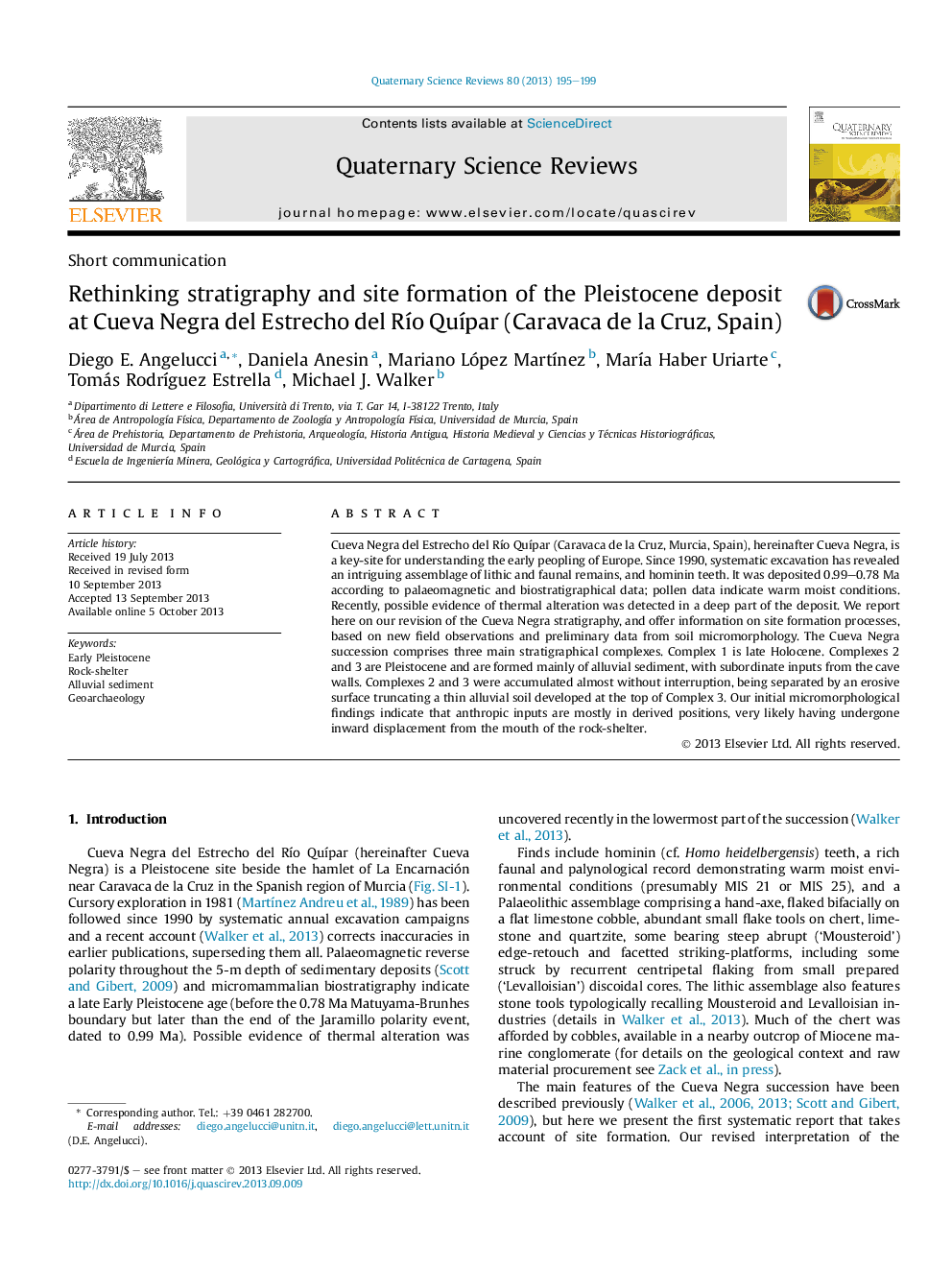| کد مقاله | کد نشریه | سال انتشار | مقاله انگلیسی | نسخه تمام متن |
|---|---|---|---|---|
| 4735344 | 1640854 | 2013 | 5 صفحه PDF | دانلود رایگان |

• Cueva Negra is an Early Pleistocene rock-shelter site in the Murcia region (Spain).
• The deposit at Cueva Negra is alluvial, with few inputs from cave walls.
• Deposition was almost continuous, only one event of soil formation is recorded.
• Anthropic inputs are common and also detected in thin section.
• Possible evidence of thermal alteration was found in the deep part of deposit.
Cueva Negra del Estrecho del Río Quípar (Caravaca de la Cruz, Murcia, Spain), hereinafter Cueva Negra, is a key-site for understanding the early peopling of Europe. Since 1990, systematic excavation has revealed an intriguing assemblage of lithic and faunal remains, and hominin teeth. It was deposited 0.99–0.78 Ma according to palaeomagnetic and biostratigraphical data; pollen data indicate warm moist conditions. Recently, possible evidence of thermal alteration was detected in a deep part of the deposit. We report here on our revision of the Cueva Negra stratigraphy, and offer information on site formation processes, based on new field observations and preliminary data from soil micromorphology. The Cueva Negra succession comprises three main stratigraphical complexes. Complex 1 is late Holocene. Complexes 2 and 3 are Pleistocene and are formed mainly of alluvial sediment, with subordinate inputs from the cave walls. Complexes 2 and 3 were accumulated almost without interruption, being separated by an erosive surface truncating a thin alluvial soil developed at the top of Complex 3. Our initial micromorphological findings indicate that anthropic inputs are mostly in derived positions, very likely having undergone inward displacement from the mouth of the rock-shelter.
Journal: Quaternary Science Reviews - Volume 80, 15 November 2013, Pages 195–199